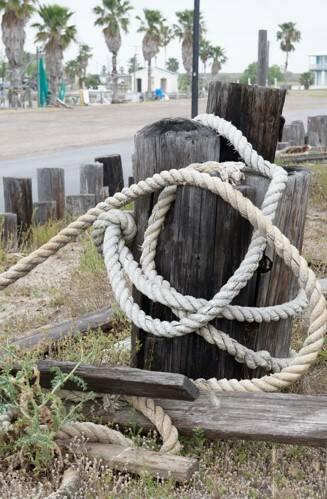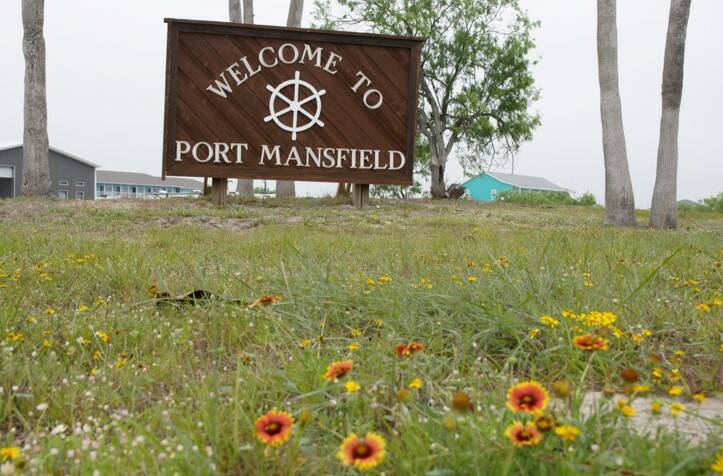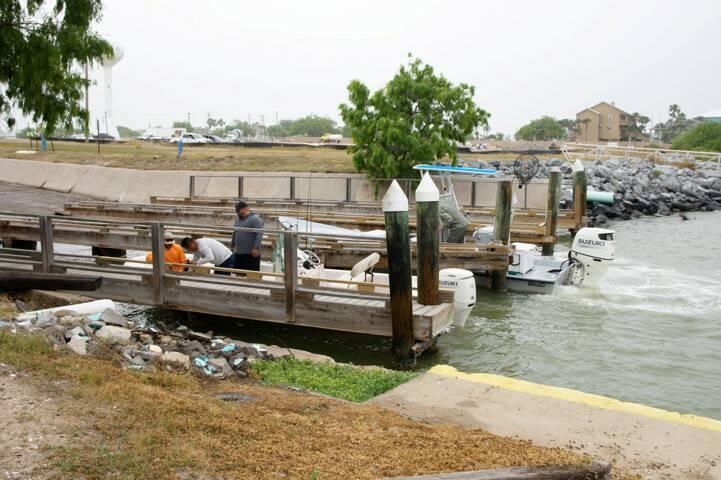PORT MANSFIELD — The $19 million U.S. Army Corps of Engineers dredging project that freed some boats from potentially being marooned in the harbor has had some pleasant consequences.
Port officials are negotiating with companies seeking to exploit the deeper water to load ocean-going barges and head for Mexico. They say having a commercial stake in the port will help ensure a buildup of silt never again chokes off port traffic.
But for the sportfishing industry here, the revitalized water flow between the Laguna Madre and the Gulf of Mexico has turned good fishing into exceptional fishing.
“I’ve been fishing here forever and its always been decent fishing, but this year it’s been way better than it has been in the flats and other areas, and the only thing we can all come up with is like, for instance, the jetties, guys were fishing the jetties for months and months and months this year and just really catching a bunch of redfish,” said Capt. Chad Kinney who runs Bamm Bamm Fishing Charters.
“They’re moving in and out of the jetties and in and out of our bay system, that’s where they’re going to, and that helps a bunch,” he added.
Water everywhere
The dredging project began in 2020, and is mostly finished, said Ronald D. Mills, port director.
“They’re going to come back and do a little touch-up stuff because there was so much material that they moved, some of it is sliding around, so they’re going to come back in June I think it is and clean that a little bit more,” Mills said. “But overall, it’s pretty much done.”
“We’ve got more water than we’ve ever had,” he added. “The Navy originally dredged it in the ‘60s to 14 feet and now we’re at 17, and between the jetties out at the island, it’s over 20.”
Kinney, who also chairs the Willacy County Navigation District board, said prior to the dredging operation, navigating between the jetties to the gulf was becoming increasingly difficult.

Kinney guides both in the Laguna Madre and offshore as well.
”I was navigating through it, but from that north jetty we had probably a 20- to 25-foot path that was eight to nine foot deep, and it sloped up from there to where it got into two or three foot deep,” he said. “If you had any good-sized boat, you would definitely hit the bottom quick.”
Other fishing guides confirmed that observation.
“It was definitely getting way too shallow, so opening that up has improved everything tremendously,” said Capt. Todd Grubert who runs Fairwater Charters.
“Yeah, I mean, it’s improved since the freeze, for sure,” he added, referring to the February 2021 event. “I’m sure the dredging has helped with some of that. It opened up all that water coming from the jetties. We’ve seen a few more fish moving offshore to inshore, so it’s definitely getting better.”
Nature’s hand
The Corps of Engineers for the past few years has been reluctant to commit to major dredging operations, but nature gave the Port Mansfield a powerful ally in convincing the federal agency to fund the operation here: The Port of Brownsville.
Cuts in the barrier island that projects up the Texas coast are few and pretty far between. Here on the Lower Texas Gulf Coast, the Port of Brownsville and Port Mansfield are the only places where the Laguna Madre empties into the gulf.
And as if to emphasize how interconnected this coastal system really is, a study by the Corps found that the plugged Port Mansfield harbor was in fact causing siltation problems 35 miles to the south at the Port of Brownsville.
“We didn’t have anything to do with it (the study), but we were able to get ahold of it and, yeah, they did show that having it open was beneficial to Brownsville, which is of course a much bigger port by any means, and it was causing silt problems down there,” Kinney said.
And that’s why Port Director Mills believes the Corps has a vested interest in preventing the siltation problems which caused so much aggravation for vessels transiting to and from the gulf from the bay to happen again.
“Officially, they haven’t said ‘yes, we’re going to do it,’ but there are a couple of indicators that say they will,” Mills said. “That is covered through their own research that if Port Mansfield gets too shallow, then it affects Brownsville, because the material doesn’t have any place else to go out. So it goes out of Brownsville and causes problems for them. So that’s the reason to give us periodic dredging.”

Commercial traffic
But Mills is not prepared to leave everything to nature.
The second prong of his strategy to ensure Port Mansfield remains silt-free is to bring commercial traffic to the port, a development which would have been impossible when the waterway was choked with sediment.
“We’ve got a couple of companies that we’re approaching the final stages on some leases so we can start moving some barges, predominantly out through the cut and down into Mexico, we’re going to try to do offshore barge runs from Port Mansfield into Altamira (near Tampico) or somewhere,” Mills said. “The main thing is, I’m trying to bring in businesses that don’t impact the environment so that we keep our fishing-friendly community. But at the same time, we get enough commercial activity that the Corps pays attention to us and keeps us dredged, which they were unable to do for the last 10 years or so.”
Kinney says adding a commercial component to the port’s portfolio isn’t necessarily a threat to the fishing. To the contrary, he says adding commercial maritime businesses strengthens Port Mansfield’s chances of keeping the jetties properly dredged.
“We’ve got some possible commercial traffic coming in, and it’s not the main thing, but it will help the environment as far as fishing goes,” he said.




